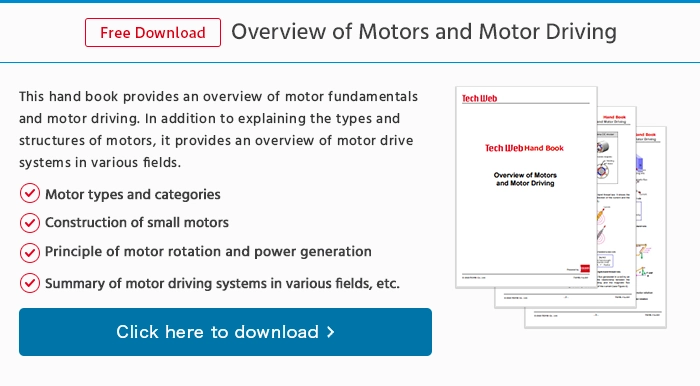motor_what2
Magnetic Force
<How Does a Motor Work?>
Motor Rotation Using a Magnet/Magnetic Force
The basic operating principle of a motor is as follows.
Around a permanent magnet having a rotational axis:
① When the outer magnets rotate (referred to as a rotating magnetic field),② The N and S poles attract and repel each other, ③ Causing the magnet with the rotational axis (center) to turn.
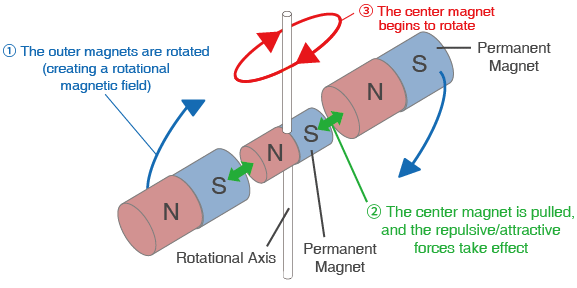
Alternatively, supplying current to a conductor generates a magnetic field around, creating a magnetic force (Rotational magnetic field). This results in the same effect as rotating a magnet.
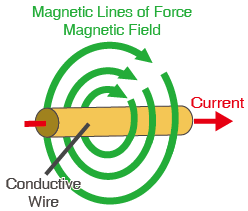
If we wind a conductive wire into a coil the magnetic force is combined, generating a large magnetic flux along with North and South poles.
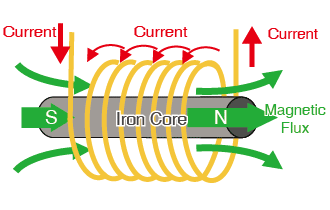
Actual Motor Operation
Here we see an actual method used for rotating a motor by generating a rotational magnetic field from a 3-phase AC source and conductive coils (3-phase AC is an AC signal with phases shifted 120°).
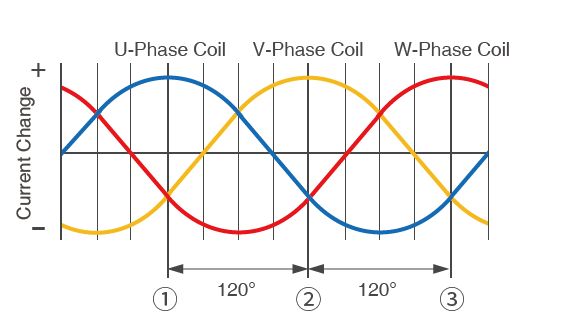
- The synthetic magnetic field in ① above is shown in ① below
- The synthetic magnetic field in ② above is shown in ② below
- The synthetic magnetic field in ③ above is shown in ③ below
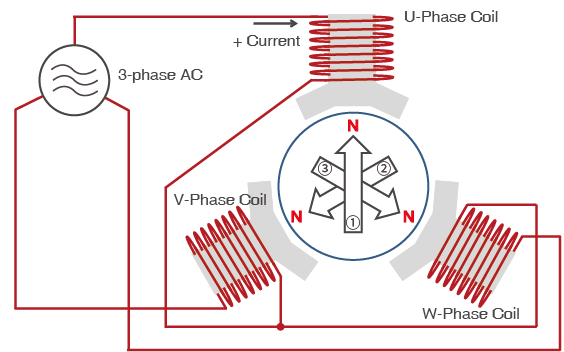
As mentioned above, the 3 phase coils (U, V, and W) are wrapped around an iron core, positioned 120° apart, with the higher voltage generated at the North pole(N) and the lower voltage at the South pole(S). Since each phase varies sinusoidally, the pole (N/S) generated from each coil will continue to change, along with the magnetic field.
If we look at just the North pole phase, it switches in order from the U coil → V coil → W coil → U coil, enabling rotation.
electronics_tips_menu



